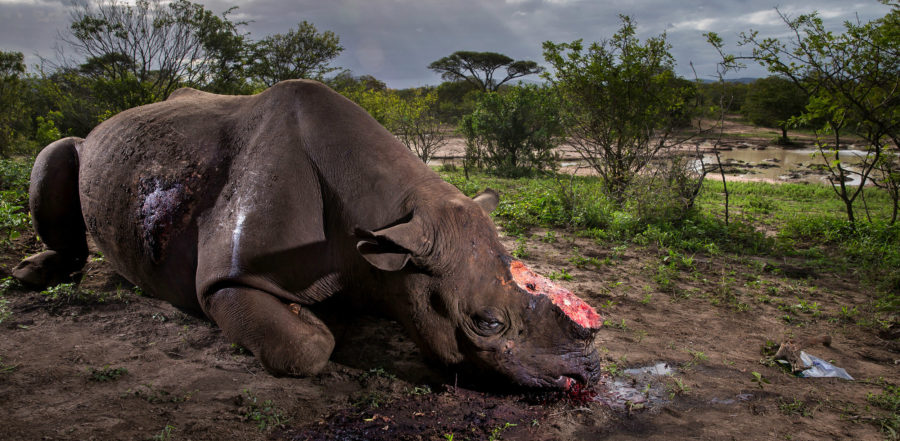Remember that heart-wrenching picture that flashed round the world last year of the poached rhino with its horn roughly sawn off by the waterhole against South Africa’s grey skies?
South African photographer Brent Stirton won the Natural History Museum’s Wildlife Photographer of the Year competition last year with that tragic photo. He writes for the Foreign and Commonwealth Office here:
30 carcasses in 8 weeks
This image was part of a National Geographic investigation into a proposed rhino horn trade. Some aspects of this investigation were undercover.
It was necessary for me to illustrate the consequences of poaching and this was the most emotionally resonant image of over 30 carcasses I saw in eight weeks. It’s one image in a photo-essay that attempts to depict the A-Z of this issue.
I do become angry about it
My job is to provide accurate information on this situation and to report on the work being done in this space. My feelings only serve to fuel my efforts. I don’t enjoy seeing the suffering of these animals and I do become angry about it.
On the ground 24/7
I have probably photographed over 100 dead rhinos and many live rhinos. I’ve had to run up a lot of trees to get away from territorial rhinos. Once I spent an entire day hiding in a euphorbia thorn bush to evade a black rhino in Namibia. These rhino are simply acting according to their instincts. Where there can be real danger is in exposing organised crime and its links to powerful individuals and government. The bottom line is that I come and go but the people I work with are on the ground 24/7 and increasingly their work is dangerous. Post-traumatic stress disorder is more and more common for frontline rangers.
My interest in conservation
I saw rhinos from an early age. My interest in conservation developed later in life when I worked with conservationists reporting on what we are losing. It’s incomprehensible to me that humanity can stand by in apathy while we lose these magnificent species. I found that I could be useful in this space representing people who most often go underpaid and underappreciated.
People do care
I am fortunate to work for the best magazines in the world. My photos travel the globe and have been used to reinforce positive lobbying for the environment in many of the countries that I have worked in. I have also been involved in many exhibitions which were seen by millions of people. I have seen time and time again that people do care about these issues but often feel impotent. I am very grateful that at this time I am able to speak to government and business about what is happening in the environment.
Have your say
What was your reaction to the photo? What more do you think should be done to help protect rhinos in the wild?
The UK will host a global conference on tackling the illegal wildlife trade in London in October.

